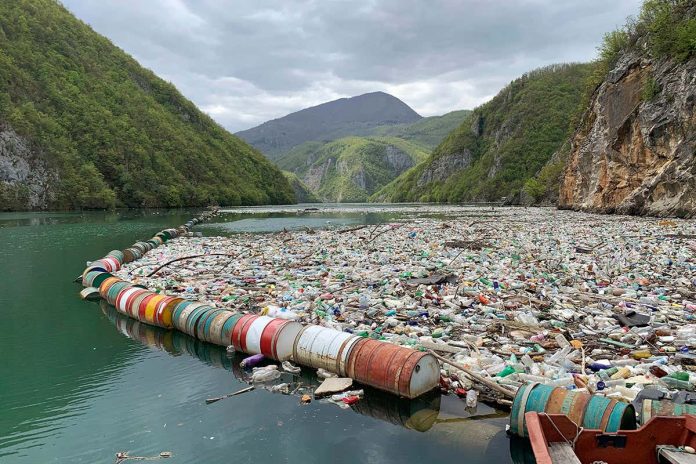
Eldar Emric/AP/Shutterstock
Microplastic particles that are exposed to fresh water or saltwater for several weeks are more likely to be absorbed by mouse cells growing in the laboratory, suggesting that environmental microplastics may be able to enter cells more easily than we thought.
Studies investigating the potential effects of ingested microplastics in animals often use clean – or “pristine” – microplastic particles. Yet these don’t fully resemble the particles found in nature, which can become coated with debris from the environment.
Anja Ramsperger at the University of Bayreuth in Germany and her colleagues took pristine microplastic particles and incubated them for two to four weeks in either fresh water from an artificial pond or in saltwater from a marine aquarium. Both of these environments were inhabited by diverse animal, plant and microbial communities. By incubating the particles, the researchers were trying to more closely imitate the real-world environmental conditions that they are normally exposed to before animals or humans encounter them.
Advertisement
They then exposed the microplastic particles to mouse cells growing in a dish in the laboratory and watched what happened under a microscope. The researchers discovered that particles incubated in freshwater or saltwater environments were 10 times more likely to be absorbed by the cells than pristine particles that were kept in purified water.
“We were very surprised by the large effect that we observed,” says Ramsperger.
The team suspects that this may be due to a layer of biological molecules, including proteins, carbohydrates and fats, that accumulated on the surface of these microplastic particles. “We are currently investigating this,” says Ramsperger. “But likely some molecules attached to the surface of the particles enhance internalisation.”
“Much of our current understanding of particle absorption is based upon pristine particles that have not been subjected to environmental conditioning,” says Douglas Walker at the Icahn School of Medicine at Mount Sinai in New York. This may underestimate how easily microplastics can enter the human body, he says.
“Future studies using more complex models will be needed to better assess risk to humans and other organisms,” says Walker.
Journal reference: Science Advances, DOI: 10.1126/sciadv.abd1211
More on these topics:











